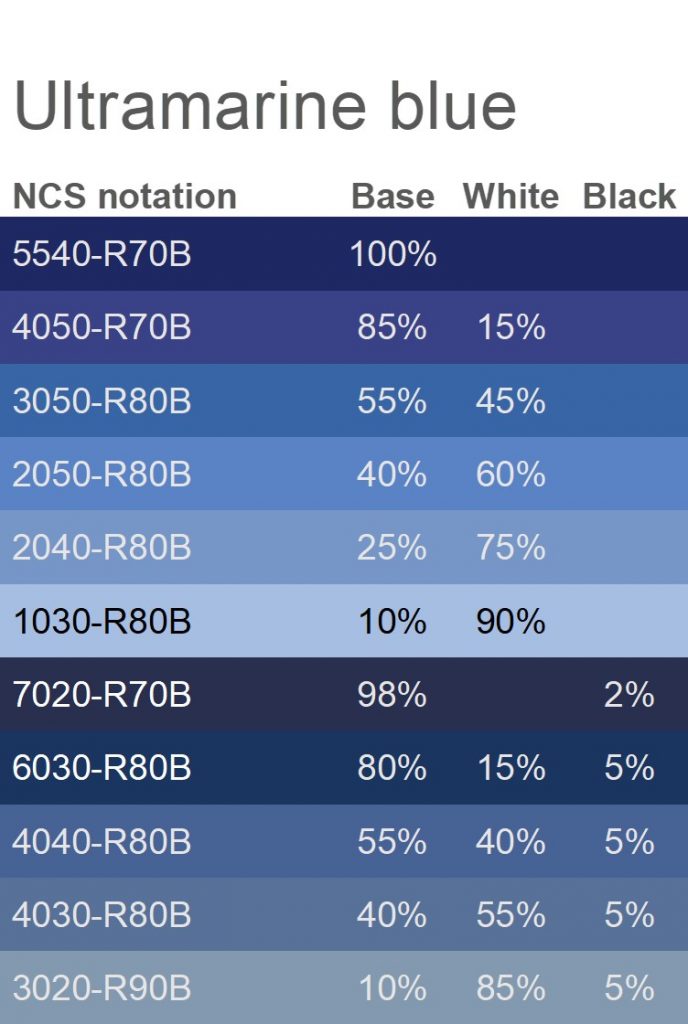
Ultramarine blue
Ultramarine blue is a pigment that gives bright blue colours. It has a high degree of opacity and lightfastness, but is sensitive to acids. It has mainly been used to paint smaller interior and exterior surfaces and details.
Blue pigments have historically been rare and expensive. The finest blue pigment was made from the precious stone lapis lazuli, and that pigment was originally called ultramarine. During the 19th century a low cost synthetic ultramarine pigment was invented allowing it to become more commonly used.
As a paint ultramarine (which is not mixed with white) appears almost black, but will with only a small addition of white give bright blue colours Compared to cobalt blue the colour of ultramarine is darker and a little more red.
Other blue pigments in Kulturkulör: Cobalt blue
Mixing chart
Kulturkulör’s mixing chart describes how you can mix traditional linseed oil paints to achieve specific colours. The chart shows the result of mixing ready-made paints and the parts are stated in percent by weight.
NCS – Natural Colour System®© is a logical colour system which builds on how the human being sees colour. The NCS notation makes it possible to describe the colours of all surface materials. You can read more about the NCS system here.

There are mixing charts for a selection of the colour samples in Kulturkulör. In the sample collection you can find more nuances that you can create with linseed oil paint and traditional pigments. The mixing charts will give you an idea of how the colour changes when mixing with white and in some cases when adding black. The mixing ratios are approximate and the properties of the pigments vary.
The mixing chart is colour coded to give an idea of the result of the mixture and what colours you can achieve with the traditional pigment, but keep in mind that the colour display varies between computer screens.